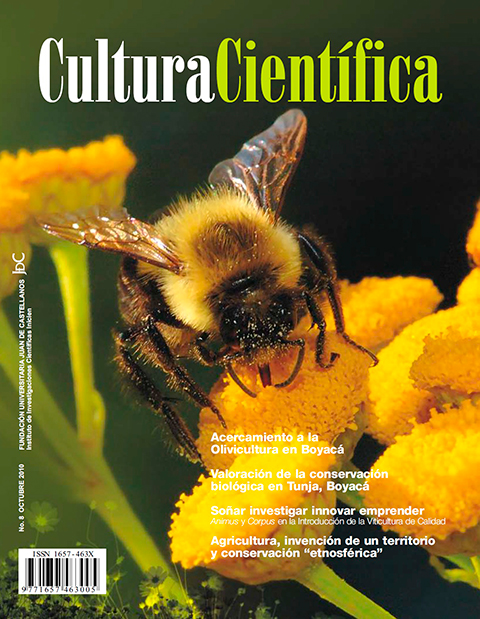Keywords:
phenology, physiology, climate, varieties, nutrition.Abstract
The olive tree (Olea europaea L.) is an ancient grain high interest in the world of nutritional and organoleptic characteristics of oil obtained from the fruit. It has spread throughout the world from Syria to the Mediterranean and was brought to America by Spanish missionaries in 1500. Currently grown in different environments has been shown to adapt and produce. In Colombia was sown in the region of Alto Ricaurte, where under conditions of cold weather tropical (average minimum annual temperatures of 71 º C and maximum of 261 º C, precipitation 980 mm, humidity relativa76% sunshine 1614 hours and photoperiod almost constant) has shown good vegetative growth, probably favored by the optimal temperatures for photosynthesis, which coincide with those required by the tree, but flowering periods are scattered throughout the year that hinder the seasonal harvest. On the other hand it appears that the greatest amount of ultraviolet radiation received by the greater height above sea level requires an almost vertical position of the leaves of the trees over the beam exposing the underside, an adaptive mechanism to protect themselves by trichomes as much solar radiation they receive.
Downloads
References
Barone, E. y Di Marco, L. 2003. Capitulo 2: Morfología e ciclo di svilupo. Pp 13-33.
Fiorino Piero Edagricole. Trattato di olivicoltura. Bologna, 461.
Barranco D. et al. 2008, El cultivo del olivo, sexta edición, Ediciones Mundi –Prensa Madrid, 846.
Deida, P., et al. 2003. Capitulo 4: La Fenologia. Pp 57-73. Fiorino Piero Edagricole. Trattato di olivicoltura. Bologna, 461.
Donoso J. et al. 2006, Comportamiento fenológico del olivo (Olea europea L.) en tres localidades de la VI región, temporada 2005-2005.
Fabbri, A. y Benelli, C. 2000. Flower bud induction and defferentiation in olive.
Journal of Horticultural Science & Biotechnology 75(2) 131-141.
Fabbri, A. y Alerci, L. 1999 Reproductive and vegetative bud differentation in Olea europaea L Journal of Hoticultural Science & Biotechnology 74(4) 522-527
Gucci R. et al. 2009, Water déficit-induced changes in mesocarp cellular processes and the relationship between mesocarp and endocarp during olive fruit development
Gucci, R. 2003. Capitulo 6: Resistenza Agli Stress Ambientali. Pp 91-111. Fiorino Piero Edagricole. Trattato di olivicoltura. Bologna, 461.
Gucci, R. 2003. Ecofisiología. Trattato di olivicoltura. Capitulo 5: Pp77-89. Fiorino Piero Edagricole. Bologna, 461.
Lincoln T. y Zeiger E. 2008, Fisiologia Vegetale, tercera edición, Piccin Padova, 1014.
Rache L et al. 2008. revigorización y clonación de yemas adultas de arboles de olivo: establecimiento in vitro de microinjertos bioagro 20 (1): 56 -65
Saenz C. et al. 2003, Fenología, aerobiología y producción del olivar en Almodóvar del campo (Castilla-La Mancha)
Soleri D. et al. 2010, Comparing the historic olive tres (Olea europea L.) of Santa Cruz Island with contemporaneus trees in the Santa Barbara, CA area: a case study of diversity and structure in an introduced agricultural species conserved in situ,
Taguas, F. 2009. El cultivo del olivo en el departamento de Boyacá –diagnostico y plan de acción-. Ediciones cisnecolor. Bogotá. 83.
Tombesi, A. 2003. Capitulo 3: Biologia Fiorale e di Fruttificazione. Pp 35-55 Fiorino Piero Edagricole. Trattato di olivicoltura. Bologna, 461.





